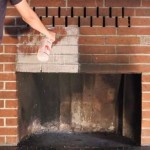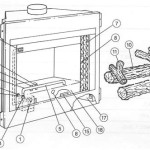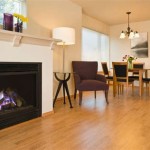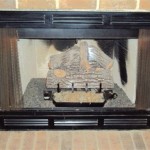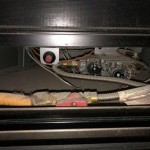```html
How To Build an Outdoor Gas Fireplace
An outdoor gas fireplace can transform a backyard into a cozy and inviting space for relaxation and entertainment. Unlike traditional wood-burning fireplaces, gas fireplaces offer convenience, ease of use, and reduced maintenance. Building one, however, requires careful planning, adherence to safety regulations, and a solid understanding of gas line installation and construction techniques. This article provides a comprehensive guide on how to build an outdoor gas fireplace, covering essential steps from initial planning to final installation.
Planning and Preparation
Before commencing any construction, meticulous planning is paramount. This phase involves determining the optimal location for the fireplace, obtaining necessary permits, and selecting appropriate materials. The chosen location should consider factors such as prevailing winds, proximity to structures and vegetation, and the overall aesthetic of the outdoor space. It is crucial to maintain a safe distance from flammable materials like fences, sheds, and trees.
Obtaining the necessary permits is a non-negotiable step. Local building codes and regulations vary, and a permit ensures compliance with safety standards and zoning ordinances. Contacting the local building department will provide information on specific requirements and inspection procedures.
Material selection impacts both the aesthetic appeal and the durability of the fireplace. Common materials include concrete blocks, natural stone, brick, and stucco. The choice depends on personal preference, budget, and the desired style. Ensure that all materials are rated for outdoor use and can withstand the elements. For the firebox itself, consider using fire-rated bricks or a pre-fabricated firebox insert designed specifically for gas fireplaces.
A detailed plan or blueprint is essential for accurate construction. This plan should include dimensions, material specifications, and gas line routing. Consider consulting with a landscape architect or experienced contractor to create a professional plan that addresses all structural and safety considerations.
Foundation and Structure
A solid foundation is crucial for the stability and longevity of the outdoor gas fireplace. The foundation should be constructed below the frost line to prevent shifting and cracking due to freezing and thawing cycles. This typically involves excavating the area, pouring a concrete footing, and building a concrete block foundation.
Begin by excavating the area to the required depth, ensuring the base is level and compact. Pour a concrete footing according to the specifications outlined in the plan. The footing should extend beyond the dimensions of the fireplace structure to provide adequate support.
Once the footing has cured, begin laying concrete blocks to build the foundation walls. Use mortar to bind the blocks together, ensuring each course is level and plumb. Reinforce the foundation with rebar for added strength, especially in areas prone to earthquakes or soil instability.
The firebox is the heart of the fireplace and requires careful construction. If using fire-rated bricks, lay them according to the plan, ensuring tight joints and proper ventilation. Alternatively, a pre-fabricated firebox insert can simplify this process. These inserts are typically made of durable metal and are designed to withstand high temperatures.
As the structure progresses, incorporate any desired features, such as storage niches for firewood or decorative elements. Ensure that these features are structurally sound and do not compromise the integrity of the fireplace.
Gas Line Installation and Safety
Gas line installation is a critical step that requires expertise and strict adherence to safety regulations. Incorrect installation can lead to gas leaks, explosions, and other hazardous situations. It is strongly recommended to hire a licensed gas fitter to handle this aspect of the project.
Before installing the gas line, ensure the main gas supply is shut off. The gas line should be buried at a safe depth, typically 12-18 inches below ground, to protect it from damage. Use polyethylene or coated steel pipe specifically designed for underground gas lines.
Run the gas line from the main supply to the fireplace location, following a direct and unobstructed route. Avoid sharp bends or kinks in the line. Install a shut-off valve near the fireplace to allow for easy control of the gas supply.
Connect the gas line to the fireplace burner according to the manufacturer's instructions. Ensure all connections are tight and leak-free. Use a gas leak detector solution to check for leaks at all joints and connections. Never use an open flame to check for gas leaks.
Once the gas line is installed and tested, backfill the trench, compacting the soil thoroughly. Ensure that the gas line is clearly marked with warning tape or flags to prevent accidental damage during future excavation.
Finishing Touches and Testing
With the structure and gas line in place, the final step involves adding the finishing touches and testing the fireplace. This includes applying the chosen exterior finish, installing a gas log set or decorative rocks, and ensuring proper ventilation.
Apply the chosen exterior finish to the fireplace structure, such as natural stone, brick veneer, or stucco. Follow the manufacturer's instructions for application, ensuring proper adhesion and weatherproofing. Pay attention to detail to achieve a professional and aesthetically pleasing finish.
Install a gas log set or decorative rocks in the firebox according to the manufacturer's instructions. These elements enhance the visual appeal of the fireplace and help distribute the heat evenly. Ensure that the chosen log set or rocks are compatible with the fireplace burner.
Inspect the fireplace to ensure proper ventilation. The firebox should have adequate airflow to support combustion and prevent the buildup of carbon monoxide. Consult the manufacturer's instructions for recommended ventilation requirements.
Before using the fireplace for the first time, conduct a thorough test. Turn on the gas supply and ignite the burner. Observe the flame pattern to ensure it is even and stable. Check for any unusual odors or noises. If any problems are detected, shut off the gas supply and consult a qualified gas technician.
Regular maintenance is essential for the safe and efficient operation of the outdoor gas fireplace. This includes cleaning the burner, inspecting gas lines and connections, and checking for any signs of damage or wear. Follow the manufacturer's recommendations for maintenance procedures.
```
How To Make An Outdoor Gas Fireplace With Diy Pete

How To Make An Outdoor Gas Fireplace With Diy Pete

How To Make An Outdoor Gas Fireplace With Diy Pete

How To Plan For Building An Outdoor Fireplace

How To Build A Gas Fire Pit Woodlanddirect Com

How To Build An Outdoor Fireplace Step By Guide Buildwithroman
:max_bytes(150000):strip_icc()/chrisjulia-971f3f9eb708447bbd364fc7f4a16280.jpg?strip=all)
10 Free Outdoor Fireplace Construction Plans

How To Make An Outdoor Gas Fireplace With Diy Pete

How To Build An Outdoor Fireplace Step By Guide Buildwithroman

How To Make An Outdoor Gas Fireplace With Diy Pete
Related Posts


